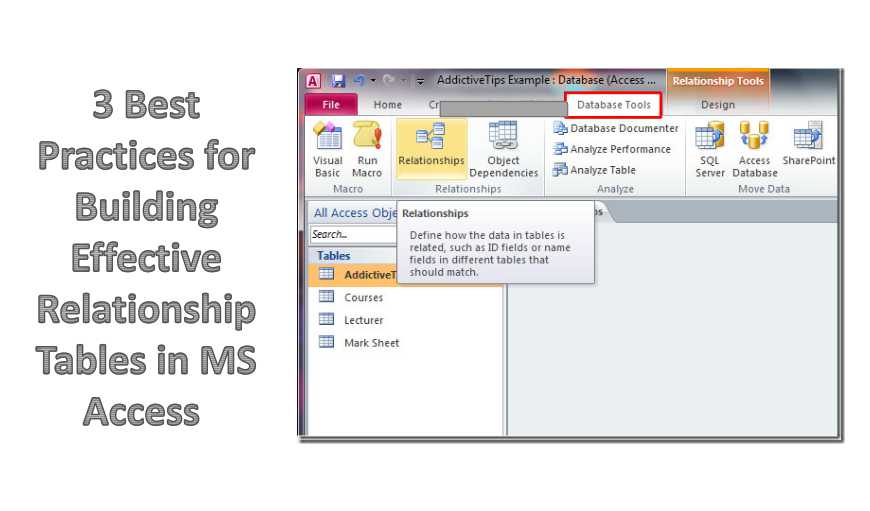In this article, we are going to discuss in detail how effective relationship tables can be designed in MS Access and discuss 3 best practices for building them.
One of the key skills you need to learn to make sure that your Access databases perform well is the art of building effective relationships. These relationships not only make your Access databases more comprehensive but also easier to manage. As a user of the application, you might feel that it is easy to create relationships and it does not involve any complex process, but that is not completely true. There might not be any rocket science involved in the process but there are some key points you should follow.
Table Relationships in MS Access

A many-to-many relationship is also one of the confusing and difficult to understand ones in MS Access. These can be used for linking multiple records from your table to several other records in another database, but are difficult to make sense of. You can reduce the redundancy by making use of relational databases instead of flat databases. Relational databases use multiple tables thus allowing you to create powerful relationships for the table records, along with useful queries.
3 key tips for building relationships in MS Access
There are certain rules of MS Access application that you need to follow to make sure that the relationships you are building are effective. These will also help you get rid of all the unintentional mistakes you make and end up wasting your time. The key tips that you need to keep in mind to make sure that you can make the best out of the databases, as well as the relationships you create, are listed below.
- Use Tables from the Same database
Access allows you to create relationships between tables from a single database only. So do not try to establish a relationship among tables that are from different databases. If you wish to relate tables from different databases, you will have to import either of the tables in either of the databases.
- Focus on creating relationships between Tables only
Do not try to get into complex areas of relating a table to a query to any other object. It is possible but not common. Once you are clear with building relationships between tables, and its advanced stages, you can then opt for relating other objects as well.
- Explicitly state Relationships
Make sure that you have clearly specified how the given tables are related, if there is not enough clarity with the application, it will not give you desired results. So just having a common field in different tables will not be enough. Explicitly establish relationships among tables so that it is evident that they are related.
Access applications are comparatively easy to create and manage than nearly any other commercial RDBMS systems. Yet incidents of corrupted mdb or accdb files tend to cause issues to its users. To keep using MS Access without worrying about data loss, invest in an Access recovery tool like DataNumen Access Repair.
Author Introduction:
Vivian Stevens is a data recovery expert in DataNumen, Inc., which is the world leader in data recovery technologies, including mdf repair and excel recovery software products. For more information visit www.datanumen.com